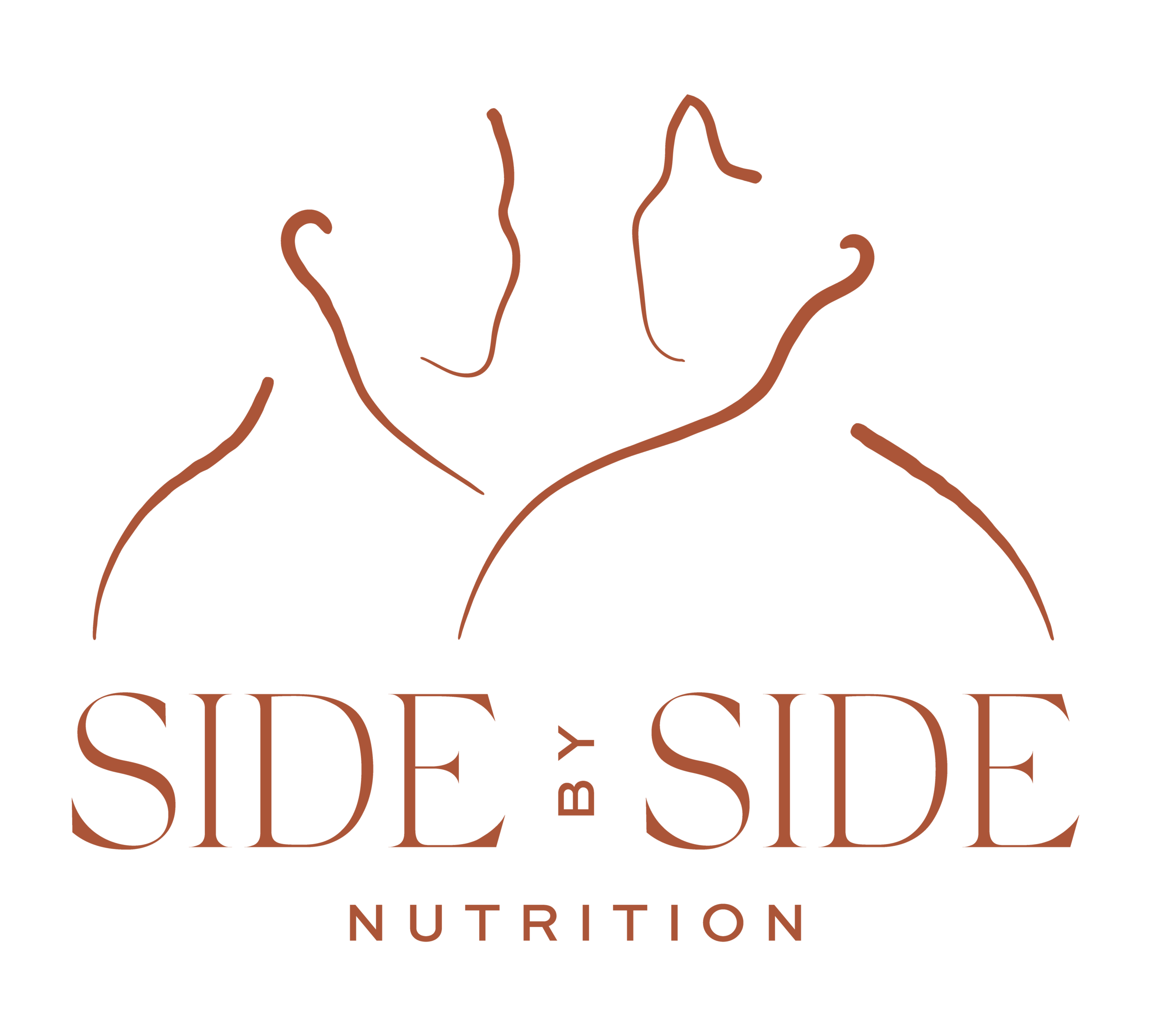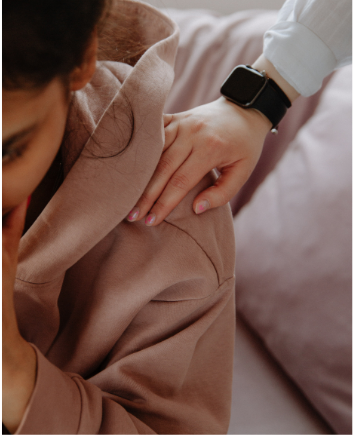How do I recover from my eating disorder? Where do I start?
By: Annique Cornejo, MS, RDN, CEDRD, (she/her)
Hello reader,
I am so glad you are here! If you are here because you are seeking steps on how to recover from your eating disorder, I want to commend you for that because identifying that you are struggling with eating disorder symptoms takes SO much courage and coming face to face with that can be HARD. If you are here because you want to support a loved one, I hope this information here is helpful and provides you with some clarity on some of the starting points to recovery.
Before we continue, I do want to remind you of 3 things. Whether you are the one struggling, the parent of a loved one struggling, caregiver/friend of someone struggling that:
You are not wrong
This isn’t your fault
This is not your choice
I hope this can serve as your warm reminder or mantra to challenge any of those negative thoughts that might be leading to self-blame or guilt.
I have an eating disorder
As I mentioned above, having the awareness of your current challenges when it comes takes bravery and vulnerability, among other things, and recognizing that your eating behaviors are something you want to explore more of is in and of itself the first step!
Support
You don’t have to do this by yourself. Telling a trusted family member, friend, or any other support person that can be a cheerleader for you as you start your journey is so beneficial in recovery. This is tough work and having people on the sidelines will be key. This is also so important because the eating disorder thrives in secrecy and isolation. Letting someone you trust know about this is already challenging the eating disorder.
What can I do next?
Recovery is out there and it is possible. If you find that you are struggling with an eating disorder, it is important that you seek the help you deserve. Eating disorders are real and life-threatening illnesses that require immediate treatment and you are more than deserving of recovery and a healthy relationship with food and body.
You are not alone. National surveys estimate that 20 million women and 10 million men in America will have an eating disorder at some point in their lives. Something that is really important to mention here is examining our biases among eating disorders. Because eating disorders are thought to affect mostly thin, cisgender, heterosexual, and able-bodied individuals, anyone who doesn’t meet this may experience a delay in diagnosis, no diagnosis, and more barriers to treatment.
Marginalized voices:
People marginalized are at high risk for EDs. Some of these factors include macro and microaggressions, discrimination trauma, and minority stress.
Despite similar rates of eating disorders among non-Hispanic Whites, Hispanics, African-Americans, and Asians in the United States, people of color are significantly less likely to receive help for their eating issues.
Transgender college students reported experiencing disordered eating at approximately four times the rate of their cisgender classmates. The Trevor Project study in 2018 revealed that 71% of transgender youth (12 to 24) have been diagnosed with an ED.
42% of men who have EDs identify as gay.
Teenage girls from low-income families are 153% more likely to be bulimic than girls from wealthy families.
From 1999 to 2009, the number of men hospitalized for an eating disorder-related cause increased by 53%.
There is a lack of research on disability and eating disorders which is unfortunate given the fact that it is estimated that 12.6% of Americans live with some form of disability. Researchers have shown that people with Autism Spectrum Disorder seem to be at a greater risk for developing binge eating disorder (BED), pica, and avoidant/restrictive food intake disorder (ARFID), all three of which are much more common among this population.
One blog post would not be able to encompass all the statistics and beyond statistics, it is almost important to listen to individual lived experience. Talk to someone who shares a different identity, diversify your feed - follow accounts of different cultures, body sizes, abilities and identities.
How do I do this?
Recovery is hard, scary, uncomfortable, and messy and no one should have to do this work alone. The next step in this journey is to seek out care from an eating disorder specialty. An early eating disorder diagnosis with subsequent interventions has been shown to increase positive outcomes. This could look like setting up an appointment with an eating disorder professional such as a therapist, contacting an eating disorder recovery clinic that varies in the different levels of care such as residential, partial hospitalization, intensive outpatient, or outpatient eating disorder service (more on this below).
This will begin the referral process and connect you to what best fits your needs. Once you have been connected to an eating disorder professional, you can expect to go through an assessment process. This process includes getting a timeline around your history with food and body, current symptoms/behaviors, and further steps. Following this, the eating disorder specialist will be able to give you recommendations for treatment options that are specific to your needs.
There are different options for treatment including levels of care. The level of care may be determined based on your current struggles and symptoms. Levels of care can range from medical hospitalization to outpatient treatment.
Medical hospitalization: This is the first step towards treatment for those whose eating disorder behaviors have led to medical instability. This attention will allow for medical monitoring until the patient is stable and can step down to the next level of care.
Residential: Involves temporarily staying in a facility day in and day out and working with an integrated treatment team. This allows for around-the-clock support including supervision during and after meals and increased monitoring of behaviors.
Partial hospitalization: PHP is the next level that allows individuals to attend treatment at an inpatient facility for 5 days per week and up to 8 hours per day (varying depending on the program). These individuals have contained eating disorder behaviors to the point where they can have meals at home while still having most meals in the facility. PHP programs don’t involve staying overnight, rather it is day treatment.
Intensive outpatient: IOP individuals continue to reduce their eating disorder behaviors and engage in treatment recommendations but still benefit from some structured support.
Outpatient: OP level of care involves individual meetings with a therapist and dietitian 1-2x per week. Eating disorder recovery is possible at the OP level with treatment team-based approaches and with treatment modalities such as FBT.
Please remember that you do not have to figure out which level of care is appropriate for you on your own. Seeking out an experienced eating disorder professional can provide you with educated support in what might best fit your needs and help point you towards the right direction. Recovery is personal and is based on your needs, finances, access, etc.
Establishing a treatment team
Once you’ve determined which level of care, it is important to consider a treatment team. Eating disorder treatment works best in a full treatment team with a medical provider, therapist, and dietitian (note: some programs may include a full team).
Due to the multifaceted nature of the eating disorder, different members of the treatment team can address different areas, while collaborating together to ensure the individual is receiving the best care. Having a team can increase support and allows for different expertise to come together for multiple purposes as it relates to treating the eating disorder. A treatment team may include:
Primary care provider
Psychotherapist
Registered dietitian
Psychiatrist
What can I expect from eating disorder treatment?
I want to start by saying that this is not a one size fits all nor a step-by-step program or checklist. However, I can give a general idea of what it can look like. (note: this is not an exhaustive list, and I would not be able to encompass all in one blog post)
Medical stabilization/nutritional rehabilitation
Containment of eating disorders (restricting food intake, purging, binge eating, compulsive movement)
Establish adequate and normative eating patterns
Challenge unhelpful thinking styles that contribute to ED thoughts and behaviors
Explore underlying needs and find helpful coping skills
Becoming familiar with your feelings and emotions and connecting with them
Learn about diet culture, weight stigma, and body image.
Creating a relapse prevention plan
What does this process look like?
The HOW in which this is done is tailored to each individual because each person has a unique story, therefore each journey is going to be different.
As you are starting your journey I want to remind you that recovery is a process and very personal. It is not a destination but rather a space for growth, becoming, learning, and unlearning and is by no means linear. Meet yourself with compassion wherever you are on this path!
Practice self compassion - guilt and shame do not serve us and might actually serve to fuel the eating disorder. Combat this by practicing grace and self compassion instead
Rally the troops - Beyond your treatment team, having a support system can be so helpful! Friends, family, co-workers, etc can all serve as a great resource.
Ask for what you need- It is 100% okay to ask for what you need. This might be asking what you need from your team, asking for someone to eat lunch with you and supporting you there, or asking a loved one to change the conversation around a triggering topic (diet culture messages, bodies, food, etc)
Ensure you are receiving regular and adequate nutrition- even when your eating disorder is loud and it feels hard. Consistency will help reduce any restricting behaviors, binge eating, improve metabolism, energy, concentration, and focus.
Identify helpful coping strategies - and practice them both daily and often! Repetition will help our brain create new neural pathways that will be more helpful and replace the old ones.
Give yourself permission to eat all foods - experiment with one food at a time, ask your dietitian about exposures, and create a plan to do this in a way that feels approachable and not overwhelming.
Set reasonable goals- while some might feel very motivated and ready to fight their eating disorder all in a short time, it’s important to recognize where you’re at in your journey and tailor goals to this. Setting every single goal you hope to accomplish, tackling every fear of food in a week, and trying to do it all too quickly can become overwhelming and potentially trigger guilt or shame, which may enable the eating disorder. How can you align your expectations to your circumstances?
What does full recovery look like?
Let me start by saying, recovery is possible and it is out there! With this being said, recovery looks and feels different for everyone. It is a personal definition and one you will get to define for yourself. One that fits your unique self, challenges, goals, and lived experience. The way someone defines recovery may not 100% resonate with you and vice versa and that’s ok. It isn’t meant to be one set definition.
What recovery might look like:
Honoring your bodies needs without counting/tracking calories
Allowing all foods to fit and tuning into your wisdom on what your body is communicating rather than using external rules
Being able to go out to eat with your friends without feeling anxious about what food will be there, what options there are, etc
Eating the dessert and not feeling guilty for it
Having an eating disorder thought and being able to choose an action that does not align with it
Using helpful coping skills to manage uncomfortable emotions instead of eating disorder behaviors
Giving yourself permission to eat seconds
Giving yourself permission to leave food on the plate because you are full and know you can have this food at a different time
Exercising because it is a form of self-care and not punishment
Not exercising although you had planned to because your body is tired and you want to honor that by resting
Going on a vacation without the mentality that you have to ‘get back on track when you return home
Eating full meals and snacks throughout the day without compensating through exercise, restricting, or ‘making up for anything’ etc
Being able to challenge food rules and messages received from society because they no longer serve a purpose in your life
Ditching the scale and untangling from the thought that your worth is tied to your weight
Challenging misconceptions about weight and correlation to health and embracing body diversity
Unfollowing Instagram accounts that don’t support your growth and healing
I can go on and on but really only you will know what it means and what it looks like for you. You hold the power and choice to nurture your growth and transformation in recovery in whatever way feels best for you.
Resources:
Marques, L., Alegria, M., Becker, A. E., Chen, C., Fang, A., Chosak, A., & Diniz, J. B. (2011). Comparative Prevalence, Correlates of Impairment, and Service Utilization for Eating Disorders across U.S. Ethnic Groups: Implications for Reducing Ethnic Disparities in Health Care Access for Eating Disorders. The International Journal of Eating Disorders, 44(5), 412–420. http://doi.org/10.1002/eat.20787
https://www.nationaleatingdisorders.org/statistics-research-eating-disorders
Goeree, Michelle Sovinsky, Ham, John C., & Iorio, Daniela. (2011). Race, Social Class, and Bulimia Nervosa. IZA Discussion Paper No. 5823. Retrieved from http://ftp.iza.org/dp5823.pdf.
Gordon, K. H., Brattole, M. M., Wingate, L. R., & Joiner, T. E. (2006). The Impact of Client Race on Clinician Detection of Eating Disorders. Behavior Therapy, 37(4), 319-325. doi:10.1016/j.beth.2005.12.002.
Zhao, Y., Encinosa, W. Update on Hospitalizations for Eating Disorders, 1999 to 2009. HCUP Statistical Brief #120. September, 2011. Agency for Healthcare Research and Quality, Rockville, MD. http://www.hcup-us.ahrq.gov/reports/statbriefs/sb120.pdf




